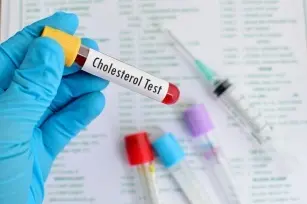Contents

Blood cholesterol tests are very important because of the possible risk of various diseases that elevated cholesterol levels can cause. So how do you test your cholesterol level? You can measure total cholesterol, but you can also perform a much more reliable test – and determine the lipid profile, i.e. indicate the concentration of LDL, HDL and triglycerides. The obtained knowledge about the fraction of cholesterol in the blood can protect, among others, against atherosclerosis, stroke. What is such a study about?
What exactly is a lipid profile?
Diagnosing the lipid profile is very important, as it allows you to avoid the development of many diseases. Some situations are a special justification for conducting this examination (age, health condition), but it is also worth undergoing such an examination as a preventive measure. Thanks to it, we gain knowledge not only about the level of total cholesterol, but also LDL, HDL and triglycerides. And this, in turn, is the first step to diagnosing the state of our lipid economy, which determines many processes in the body, affecting mainly the circulatory system (possible atherosclerosis, coronary artery disease, heart attack, stroke).
Cholesterol – fractions
Cholesterol comes in three known fractions. The “bad” is LDL, which easily penetrates into the bloodstream, contributing to the formation of ischemic heart disease and atherosclerosis. The “good” cholesterol is the HDL fraction, i.e. fat compounds that penetrate the walls of the arteries with proteins, but do not accumulate in them, but on the contrary – they take part of the cholesterol remaining in the arteries, and then transport it to the liver, where, after combining with proteins and converted to bile acids, they are excreted from the body. This role makes HDL a good fraction – which, by cleansing the blood vessels and lowering the concentration of bad cholesterol, reduces the risk of cardiovascular diseases. There remains a third fraction – triglycerides, which are perceived as relatively indifferent. Their high level indicates a high content of fats in the blood, which is why such indicators are often observed in obese people, in those who like sweets and in diabetics. Exceeding the standards for the content of these fats may also pose a threat, carrying the risk of ischemic heart disease.
When is cholesterol normal?
Cholesterol standards are defined by the Polish Prevention Forum using precise indicators. In the case of total cholesterol, the norm is below 190 mg / dl, LDL fraction below 115 mg / dl, HDL fraction above 45 mg / dl in men and above 45 mg / dl in women, triglyceride fraction below 150 mg / dl. The results of tests carried out in different laboratories may differ, so it is worth getting acquainted with the method of counting and the standards applicable in a given facility. However, the adopted indicators apply only to healthy people, the issue is different in the case of people struggling with atherosclerosis, diabetes, after diseases – heart attack, stroke.
Get tested
The frequency of testing should be conditioned by age and health. After the age of 45-50, you should undergo this examination annually. Earlier, if the results do not show any anomalies, it is enough to repeat the tests every few years. As part of the public health service, the examination is performed after obtaining a referral for it. Blood samples should be taken on an empty stomach, eating normally beforehand, without falsifying the results. Elevated cholesterol levels can be a threat due to genetic predisposition, as a result of lipid metabolism disorders, taking medications, practicing a fatty diet and lack of exercise.









